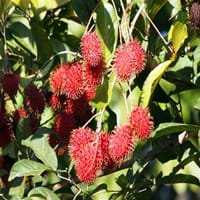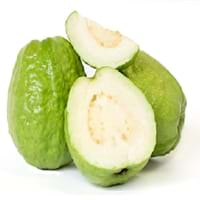Health Benefits
Anti-oxidant properties, Boosts immune system, Skin rejuvenation, Strengthening of bones
Cancer prevention, Diarrhea treatment, Prevents constipation, Scurvy treatment, Treatment of dysentary
General Benefits
Antiseptic properties, Cures headache, Removes waste from kidney
Controls blood pressure, Cures cough, Improves eye vision, Maintains healthy cholesterol level, Treatment of common cold
Skin Benefits
Hydrates skin
Anti-aging benefits, Brightens and lightens complexion, Hydrates skin, Treatment of skin diseases
Hair Benefits
Good conditioner
Prevents hair loss
Allergy Symptoms
Chest pains, Rhinitis, Wheezing
Breathing difficulty, Coughing, Runny nose, Sneezing, Swelling of mouth, tongue or lips, Wheezing
Side Effects
Unknown
Hair thinning, Nail thinning, Skin problems, Tooth decay, Weakness, Possibly unsafe during pregnancy
Best Time to Eat
As a snack in the late afternoon, Don't consume at night and before bed, Eat the fresh ones, avoid mixing with any other foods, don't eat after meal., Morning time (before lunch)
As a snack in the late afternoon, Don't consume at night and before bed, Eat the fresh ones, avoid mixing with any other foods, don't eat after meal., Morning time (before lunch)
Vitamin B5 (Pantothenic Acid)
Vitamin C (Ascorbic Acid)
Vitamin K (Phyllochinone)
Phytosterol
Not Available
Calories in Fresh Fruit with Peel
Calories in Fresh Fruit without Peel
Not Available
Not Available
Calories in Frozen Form
Not Available
Calories in Jam
Not Available
Calories in Pie
Not Available
Type
Tree fruit, Tropical
Tree fruit, Tropical
Season
Early summer, Early winter, Late fall, Late spring
All seasons
Varieties
Rongrien, Chompu, Rapiah, Bingjai and Lebak Bulus
Lucknow 49, Allahabad Safeda, Chittidar, Harijha, Apple guava, Hafshi, Arka Mridula and Allahabad Surkha
Color
Coral red, Yellow
Green, Pink, Yellow
Inside Color
Greyish-white
White
Taste
Sour, Sweet
Sweet-Sour
Origin
Unknown
Central America, Mexico, South America
Soil Type
Clay, Loam
Loam, Rocky, Sandy
Climatic Conditions
Humid
Sunny
Facts about
- Oils extracted from its seeds is used to make soaps and candles.
- 'Rambut' means hairy in Malay.
- It makes the best hair mask.
- Seeds are edible and healthy too.
- The black pigment in Guava leaves is used for textile applications.
- Guava leaves are used to make tea.
- Oils extracted from guava seeds are used in various cosmetics.
- Guava wood is used for decorative purposes.
Top Producer
Thailand
India
Other Countries
Africa, India, Indonesia, Malaysia, Philippines, Sri Lanka
China, Indonesia, Mexico, Nigeria, Pakistan, Philippines, Thailand
Top Importer
Singapore
Canada
Top Exporter
Thailand
India
Botanical Name
Nephelium lappaceum
Psidium guajava
Synonym
Rambota
Not Available
Subkingdom
Tracheobionta
Tracheobionta
Division
Tracheophyta
Magnoliophyta
Class
Magnoliopsida
Magnoliopsida
Order
Sapindales
Myrtales
Family
Sapindaceae
Myrtaceae
Species
N. lappaceum
Psidium guajava
Generic Group
Not Available
Myrtle
Difference Between Rambutan and Guava
We might think that Rambutan and Guava are similar with respect to nutritional value and health benefits. But the nutrient content of both fruits is different. Rambutan and Guava Facts such as their taste, shape, color, and size are also distinct. The difference between Rambutan and Guava is explained here.
The amount of calories in 100 gm of fresh Rambutan and Guava with peel is 69.00 kcal and 68.00 kcal and the amount of calories without peel is Not Available and Not Available respectively. Thus, Rambutan and Guava belong to High Calorie Fruits and Low Calorie Fruits category.These fruits might or might not differ with respect to their scientific classification. The order of Rambutan and Guava is Sapindales and Myrtales respectively. Rambutan belongs to Sapindaceae family and Guava belongs to Myrtaceae family. Rambutan belongs to Nephelium genus of N. lappaceum species and Guava belongs to Psidium genus of Psidium guajava species. Beings plants, both fruits belong to Plantae Kingdom.









